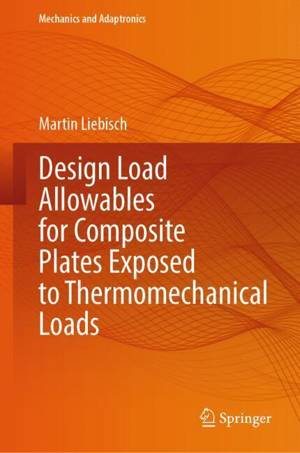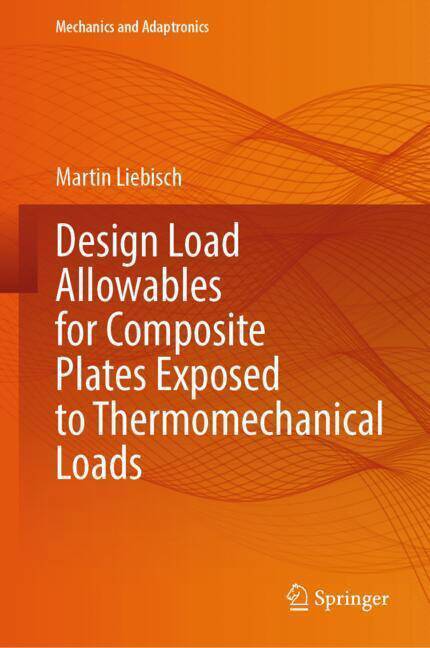
- Retrait gratuit dans votre magasin Club
- 7.000.000 titres dans notre catalogue
- Payer en toute sécurité
- Toujours un magasin près de chez vous
- Retrait gratuit dans votre magasin Club
- 7.000.0000 titres dans notre catalogue
- Payer en toute sécurité
- Toujours un magasin près de chez vous
Design Load Allowables for Composite Plates Exposed to Thermomechanical Loads
Martin Liebisch
147,95 €
+ 295 points
Description
Current methodologies used to design lightweight structures made of CFRP materials under static thermomechanical conditions often rely on simplified approaches. In particular, the temperature-related design case is typically described by assuming a uniform distribution of the worst-case temperature, which is the maximum allowable temperature that can occur simultaneously with the mechanical loads. However, these simplifications can lead to a weight penalty due to their over-conservatism. To address these limitations, the present work describes a novel analysis methodology that accounts for spatial distributions of temperature. This approach allows for a more detailed understanding of the structural behavior under these demanding conditions. As a result, existing load-carrying potentials can be identified and used to fully exploit the advantage of CFRP structures. Moreover, this methodology generates an improved understanding of the variability in the structural behavior under such scattering thermal conditions, which can increase confidence and reliability in the design process and lead to reduce related margins of safety. To accurately model the mechanical behavior of structures at distributed temperature conditions, it is essential to consider the temperature-dependent properties of the material. These properties describing the elastic and strength behavior of the unidirectional ply, are derived from typical material characterization performed at various temperatures. In this approach, a phenomenological model is used to account for the temperature dependence of the material. This model is fitted to the characterization results to consider the individual magnitude of the properties. The resulting property allowables contain typical material uncertainties, as well as the model uncertainty that is defined by assessing the errors between the model and measurement. To determine the stability and strength behavior of structures under different thermal conditions, Finite-Element-Analysis (FEA) is utilized. Variations of thermal load distributions are analyzed to consider the uncertainty in opertational conditions qualitatively and quantitatively. A series of such analyses is conducted at different thermal conditions to determine design values such as buckling loads or failure loads. Based on this data, surrogate modeling leads to design value formulation as a function of the temperature distribution. This approach provides a more comprehensive and reliable assessment of the structural behavior under different thermal conditions and enables to either determine more realistic worst-case behavior or enhanced design values such as probabilistic structural allowables. The final part of the thesis demonstrates the developed analysis methodology on representative skin field structures. The comparison to the common analysis procedure highlights the potentials of structural load carrying capability and reveals deficiencies in the present approach. Thus, a detailed modelling of the temperature distribution leads additionally to an improved reliability of the design process and more efficient and robust structures.
Spécifications
Parties prenantes
- Auteur(s) :
- Editeur:
Contenu
- Nombre de pages :
- 200
- Langue:
- Anglais
- Collection :
Caractéristiques
- EAN:
- 9783031713514
- Date de parution :
- 30-11-24
- Format:
- Livre relié
- Format numérique:
- Genaaid
- Dimensions :
- 163 mm x 237 mm
- Poids :
- 526 g

Les avis
Nous publions uniquement les avis qui respectent les conditions requises. Consultez nos conditions pour les avis.






